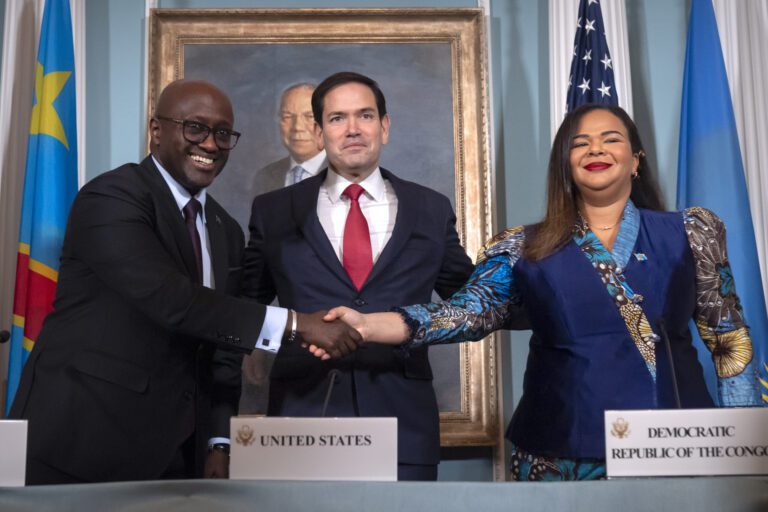Historic U.S.-Brokered Peace Agreement Between Rwanda and DRC: A New Dawn for Africa
Introduction: A Glorious Triumph
In a significant diplomatic achievement, President Trump has hailed a recent peace agreement between Rwanda and the Democratic Republic of the Congo (DRC) as a "glorious triumph." This U.S.-brokered deal aims to put an end to decades of violence that has plagued both nations.
Key Aspects of the Agreement
-
Peace Accord Signing: The foreign ministers from Rwanda and the DRC gathered at the White House to officially sign the peace accord. This historic moment signifies a commitment to ending hostilities that have resulted in devastating human and economic losses.
- End of Violence: President Trump stated, “Today the violence and destruction comes to an end. The entire region begins a new chapter of hope and opportunity.” This sentiment marks a hopeful turning point for millions affected by the conflict.
Background: Roots of Conflict
The clashes between Rwanda and the DRC trace back to the 1994 genocide against the Tutsis in Rwanda. Since that horrific event, violence has escalated, fueled by:
- Ethnic Tensions: Historical grievances have intensified the conflict, impacting civil life in both countries.
- Resource Wars: The region is rich in rare minerals such as gold, diamonds, and other essential resources used in electronics (source).
This mineral wealth is a double-edged sword, creating both opportunity and conflict.
The Human Cost of Conflict
The ongoing struggle has resulted in staggering losses:
- Death Toll: Estimated at up to 6 million lives lost.
- Displacement: Approximately 7 million people have been uprooted from their homes due to the violence.
This peace agreement seeks to provide a framework for rebuilding and reconciliation.
Economic Implications: Access to Rich Resources
The peace agreement also holds significant economic implications for the U.S.:
-
Access to Minerals: The deal opens avenues for American companies to gain access to the DRC’s vast deposits of precious metals and minerals, vital for technology and other sectors.
- Countering China: The U.S. government aims to strengthen its position in Africa amid rising Chinese influence, with an estimated $24 trillion in untapped minerals in the region (source).
Challenges Ahead: Remaining Rebel Groups
While the agreement is a step forward, it is important to note that it faces considerable challenges:
- Rebel Groups: Many factions, including the Democratic Forces for the Liberation of Rwanda, have not signed the agreement. They assert that the terms are not binding, leaving ongoing conflicts likely to continue.
Future Developments
Looking ahead, the presidents of Rwanda and DRC are slated to visit Washington next month to finalize the complete protocol and solidify their commitment to peace.
Conclusion: A New Chapter for Africa
This peace accord represents a critical turning point for both nations and the wider region. While challenges remain, the hope for prosperity and stability shines brighter than ever as Africa writes a new chapter in its history of conflict and resilience.
Call to Action
Stay informed about global peace efforts and their implications on regional stability. For more information on international relations and development, visit reputable resources such as the United Nations and the Associated Press.
By presenting a structured and engaging narrative, this article addresses key points about the peace agreement while optimizing for SEO with external links and clear headings.


